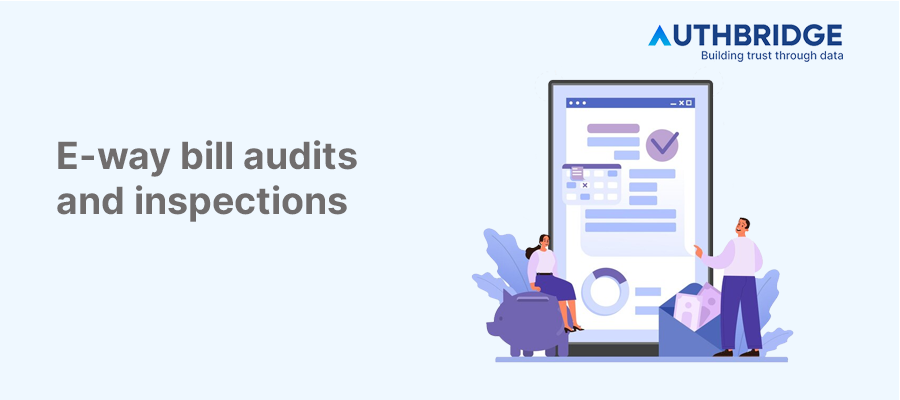E-Way Bill Audits And Inspections: Comprehensive Guide To Compliance And Best Practices

E-Way Bill audits and inspections are critical components of the GST compliance mechanism, designed to ensure the accurate and lawful transportation of goods across India. These processes verify the correctness of the E-Way Bill and ensure that the goods being transported comply with the stated details, thereby minimizing tax evasion and enhancing the efficiency of goods movement.
Legal Basis and Framework
The legal framework for E-Way Bill audits and inspections is outlined in the GST laws and regulations. These provisions empower tax authorities to inspect the E-Way Bills and the goods in transit at any point during their movement to ensure compliance with the GST norms.
2. Preparing for an E-Way Bill Audit
Proper preparation can significantly ease the process of undergoing an E-Way Bill audit.
Documentation and Record-Keeping
Maintaining comprehensive records is crucial. This includes invoices, E-Way Bills, transport documents, and any correspondence related to the consignment. Accurate and accessible records can swiftly address queries from auditors.
Common Areas of Scrutiny
Auditors may focus on discrepancies between invoices and E-Way Bills, the validity of E-Way Bills, and the classification and valuation of goods. Ensuring consistency across documents is key to a smooth audit process.
Data Table: Key Documents for E-Way Bill Audit
Document Type | Purpose | Importance |
Invoices | Confirm details of the transaction | High |
E-Way Bills | Verify legal transport of goods | High |
Transport Documents | Validate the movement of goods | Medium |
Correspondence | Support compliance efforts | Low |
3. The Process of E-Way Bill Inspection
Inspections are a routine part of ensuring compliance with E-Way Bill regulations.
On-the-Spot Checks and Verifications
Authorities may conduct spot checks to verify the E-Way Bill against the actual goods being transported. This includes checking the E-Way Bill number, the description of goods, and the consignment's destination.
Criteria for Selecting Consignments for Inspection
Selection criteria may include random checks, risk-based selection, or specific intelligence indicating potential non-compliance. The goal is to ensure fairness and efficiency in the inspection process.
4. Responding to Audit Findings and Inspections
Understanding how to respond to audit findings is crucial for businesses.
Steps to Take if Discrepancies are Found
If discrepancies are identified, businesses should review their records, provide explanations or clarifications, and, if necessary, take corrective actions to resolve the issues.
Rights and Responsibilities of Taxpayers
Taxpayers have the right to understand the nature of any discrepancies found and to be informed about the steps they can take to address them. They are responsible for ensuring that their records are accurate and compliant with GST laws.
5. Common Issues and Challenges in E-Way Bill Audits
Navigating common issues can help businesses remain compliant.
Misclassification of Goods
Incorrectly classifying goods can lead to discrepancies in E-Way Bills. Regular reviews and updates to product classifications can mitigate this risk.
Incorrect or Incomplete E-Way Bills
Errors in E-Way Bill entries are a common issue. Ensuring accuracy at the time of entry is crucial.
6. Role of Tax Professionals in E-Way Bill Compliance
Tax professionals play a vital role in navigating the complexities of E-Way Bill compliance.
Advisory and Compliance Support
They provide expert advice on compliance, helping businesses understand and meet their obligations under the GST regime.
Handling Audits and Inspections
Tax professionals can assist in preparing for audits, responding to findings, and implementing corrective actions to address any issues.
7. Future Trends in E-Way Bill Audits and Inspections
Staying ahead of future trends is essential for businesses.
Technological Advancements
Technologies like AI and blockchain may soon play a significant role in streamlining E-Way Bill compliance and audits, offering more efficient and transparent processes.
Regulatory Changes and Their Impact
Ongoing regulatory changes will continue to shape the landscape of E-Way Bill compliance. Businesses and their tax advisors must stay informed and adaptable to these changes.
Conclusion
E-Way Bill audits and inspections are integral to the GST compliance framework, ensuring the lawful transportation of goods across India. By understanding the audit and inspection process, maintaining accurate records, and staying informed about regulatory changes, businesses can navigate these requirements more effectively. Leveraging the expertise of tax professionals and embracing technological advancements can also play a crucial role in enhancing compliance and operational efficiency.
Category

Abhinandan Banerjee
(Associate Manager - Marketing)
Abhinandan is a dynamic Product and Content Marketer, boasting over seven years of experience in crafting impactful marketing strategies across diverse environments. Known for his strategic insights, he propels digital growth and boosts brand visibility by transforming complex ideas into compelling content that inspires action.



